| Living with aching legs can be frustrating and limit your mobility. It’s important to have a clear understanding of the causes of leg pain so that you can find solutions and preventative measures to keep you moving comfortably. Don’t let aching legs hold you back! Schedule a consultation with Advanced Vein and Laser Center today for expert diagnosis and a personalized treatment plan for pain-free legs. |
Do you ever experience a dull throbbing or a persistent ache in your legs? Leg pain, also known as aching legs, is a common problem that can significantly impact your daily life. While a temporary ache after a long run might not be a cause for concern, persistent leg pain can be a sign of an underlying condition.
This blog post delves into the various causes of aching legs, from muscle strain to medical conditions. We’ll explore treatment options to alleviate the pain and prevent future discomfort. We’ll also discuss natural remedies and tips for proper leg care to keep your legs healthy and strong.
Let’s take a step forward and understand the reasons behind your aching legs!
Understanding the Causes of Aching Legs
It’s important to be able to recognize when aching legs might be a sign you should seek professional help. Early diagnosis and treatment can make a significant difference in managing your leg pain and preventing future complications.
Leg pain can have various causes, including muscle strain, overuse, injury, or underlying medical conditions.
- Muscle strain: This happens when the muscles in the legs are stretched or torn, usually thanks to physical activity or overexertion. This can result in pain, swelling, and difficulty moving.
- Overuse of the leg muscles: Such as repetitive movements or prolonged standing, can also lead to leg pain. This is common in occupations that require long periods of standing or walking like nursing or teaching.
- Injuries: Anything from sprains and strains to fractures, can cause acute leg pain. These injuries can occur during sports activities, accidents, or falls.
- Certain medical conditions: Arthritis, deep vein thrombosis (DVT), varicose veins, or peripheral artery disease (PAD), can also contribute to leg pain.
Understanding the underlying cause of your leg pain is essential for effective treatment and prevention.
How Do You Know When Your Leg Pain Requires Medical Attention
While most cases of leg pain can be managed at home with self-care measures, there are certain signs and symptoms that indicate the need for medical attention. You should seek medical help if:
- The pain is severe and persistent, or if it worsens over time.
- The leg is swollen, red, or warm to the touch.
- There is a visible deformity or protruding bone.
- You are unable to bear weight on the leg.
- The pain is accompanied by fever, chills, or unexplained weight loss.
These symptoms may indicate a more serious underlying condition that requires medical evaluation and treatment.
Exercises to Strengthen Leg Muscles
Strengthening the muscles in your legs through exercise can help alleviate leg pain and prevent future discomfort. It’s important, however, to start with light weights or resistance and gradually increase as your strength improves.
You should also consider consulting with a fitness professional or physical therapist for guidance on proper form and technique to prevent worsening your leg pain through improper exercise. Here are some simple exercises that target different leg muscle groups:
- Quadricep exercises: Squats, lunges, and leg extensions can strengthen the muscles in the front of your thighs.
- Hamstring exercises: Deadlifts, hamstring curls, and bridges can target the muscles in the back of your thighs.
- Calf exercises: Calf raises, jump rope, and stair climbing can strengthen the muscles in your calves.
- Glute exercises: Squats, hip thrusts, and lunges can work your glute muscles.
Possible Treatments For Underlying Causes Of Aching Legs
Leg pain can be caused by a wide range of conditions or injuries. Understanding the underlying cause of your aching legs is vital because the treatment depends heavily on the underlying cause.
Once a medical professional has assessed the severity of your condition they will be able to suggest a few courses of actions to alleviate your pain or discomfort. Here are some possible treatment options:
- Rest and elevation: If leg pain is due to muscle strain or overuse, resting the legs and elevating them can help reduce swelling and alleviate pain.
- Pain relievers: Over-the-counter pain medications, such as ibuprofen or acetaminophen, can provide temporary relief from leg pain.
- Physical therapy: A physical therapist can design a customized exercise program to strengthen the leg muscles and improve flexibility.
- Compression stockings: These tight-fitting stockings apply pressure to the legs, promoting blood flow and reducing swelling in cases of varicose veins or DVT.
- Minimally invasive procedures: In cases of severe varicose veins or venous insufficiency, treatments like sclerotherapy, radiofrequency ablation, or ambulatory phlebectomy may be recommended.
It’s important to consult with a healthcare professional to determine the most appropriate treatment for your specific condition.
Procedures For Serious Underlying Leg Pain Causes
A. Sclerotherapy:
A medical procedure used to treat varicose veins and spider veins. It involves injecting a solution directly into the affected veins, causing them to shrink and eventually fade away. It is relatively painless and requires little to no downtime. Multiple sessions may be needed for optimal results. Sclerotherapy can effectively alleviate leg pain and improve the appearance of varicose veins.
B. Radiofrequency Ablation
A minimally invasive procedure used to treat varicose veins and venous insufficiency. It involves using radiofrequency energy to heat and seal off the affected veins, redirecting blood flow to healthier veins. Radiofrequency ablation is performed under local anesthesia and usually takes less than an hour to complete.
The procedure is well-tolerated and has a high success rate in relieving leg pain and improving vein function. Recovery time is minimal, and most patients can resume normal activities shortly after the procedure.
C. Ambulatory Phlebectomy
A surgical procedure used to remove varicose veins through small incisions in the skin. It is performed under local anesthesia on an outpatient basis. During the procedure, the surgeon makes tiny incisions along the path of the varicose veins and removes them using specialized hooks.
Ambulatory phlebectomy is an effective treatment for larger varicose veins that cannot be treated with sclerotherapy. It can provide long-lasting relief from leg pain and improve the cosmetic appearance of the legs.
Natural Remedies to Relieve Aching Legs
In addition to medical treatments, there are several natural remedies that can help relieve aching legs. If your leg pain is not severe or stemming from a clear injury, there are a number of things you can do from the comfort of your own home which should help lower the pain or discomfort.
These include:
- Warm or cold compress: Applying a warm or cold compress to the affected area can help reduce inflammation and alleviate pain.
- Epsom salt bath: Soaking your legs in warm water with Epsom salt can relax the muscles and provide relief.
- Massage: Gentle massage can help improve blood circulation and reduce muscle tension.
- Essential oils: Certain essential oils, such as lavender or peppermint oil, can be diluted and applied topically to soothe achy muscles.
- Herbal supplements: Some herbal supplements, like turmeric or ginger, have anti-inflammatory properties that may help reduce leg pain.
While natural remedies can provide temporary relief, it’s important to address the underlying cause of the leg pain for long-term management. If leg pain isn’t subsiding after a few days of trying any of the above methods, it might be time to seek medical attention.
Tips for Proper Leg Care
Prevention is always better than cure. If you don’t struggle with aching legs but are at risk because of your lifestyle or a medical condition, there are a few different techniques you can employ to avoid leg pain. Taking care of your legs is essential for preventing leg pain and maintaining overall leg health.
Here are some tips for proper leg care:
- Maintain a healthy weight: Excess weight puts additional strain on your leg muscles and joints. Maintaining a healthy weight can reduce the risk of leg pain and injury.
- Stay active: Regular exercise, such as walking, swimming, or cycling, can improve leg strength, flexibility, and circulation.
- Practice good posture: Maintaining proper posture while standing, sitting, and walking can help reduce stress on your legs.
- Wear comfortable shoes: Choose footwear that provides proper support and cushioning to prevent leg pain and discomfort.
- Take breaks: If you have a job that requires long periods of sitting or standing, take regular breaks to stretch and move your legs.
By following these tips, you can promote leg health and reduce the risk of leg pain.
Don’t Let Aching Legs Hold You Back From Living Your Life To The Fullest!
At Advanced Vein and Laser Center (AVLC), our team of vascular specialists can provide a comprehensive evaluation to pinpoint the cause of your leg pain. With advanced diagnostic tools and personalized treatment plans, AVLC can help you find lasting relief and get back to enjoying your daily activities.
Schedule a consultation today to take control of your leg health!

Dr. Steven Heird, MD, is a distinguished specialist in the treatment of venous disease and vascular surgery. As one of the dedicated doctors at the Advanced Vein and Laser Center, located in York and Lancaster, Pennsylvania, Dr. Heird has made a significant impact in the field of vein care. His expertise and commitment to patient well-being have earned him a trusted reputation among his peers and patients. Dr. Heird’s work at the Advanced Vein and Laser Center reflects his passion for providing compassionate and effective vein care, improving the lives of those he serves with precision and care.
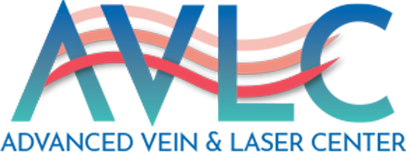

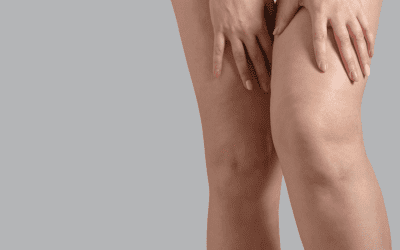
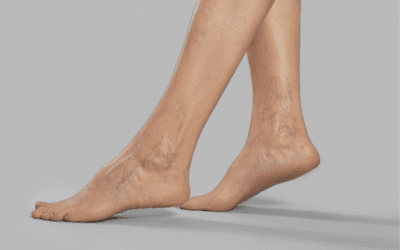
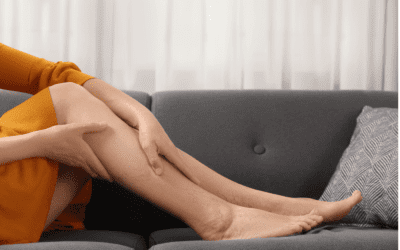
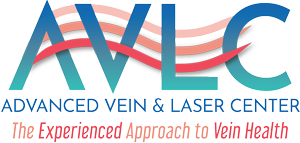
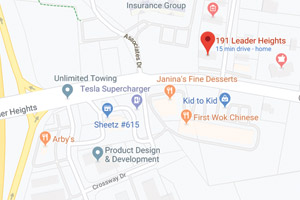
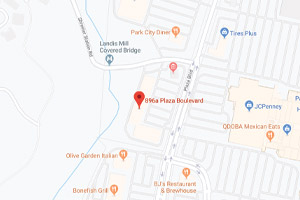
0 Comments